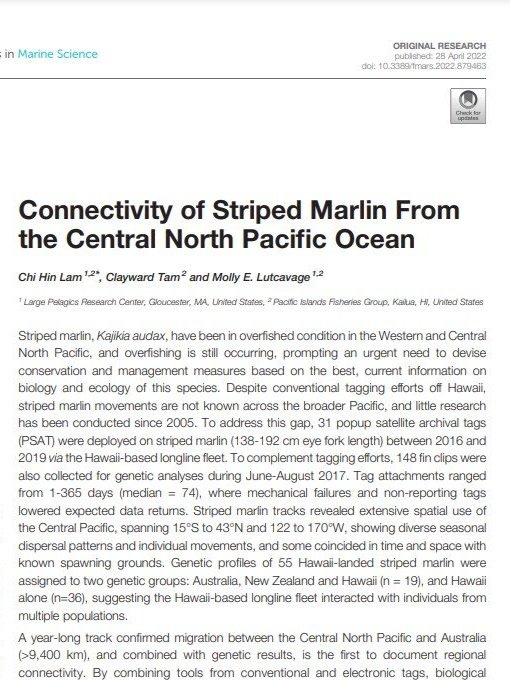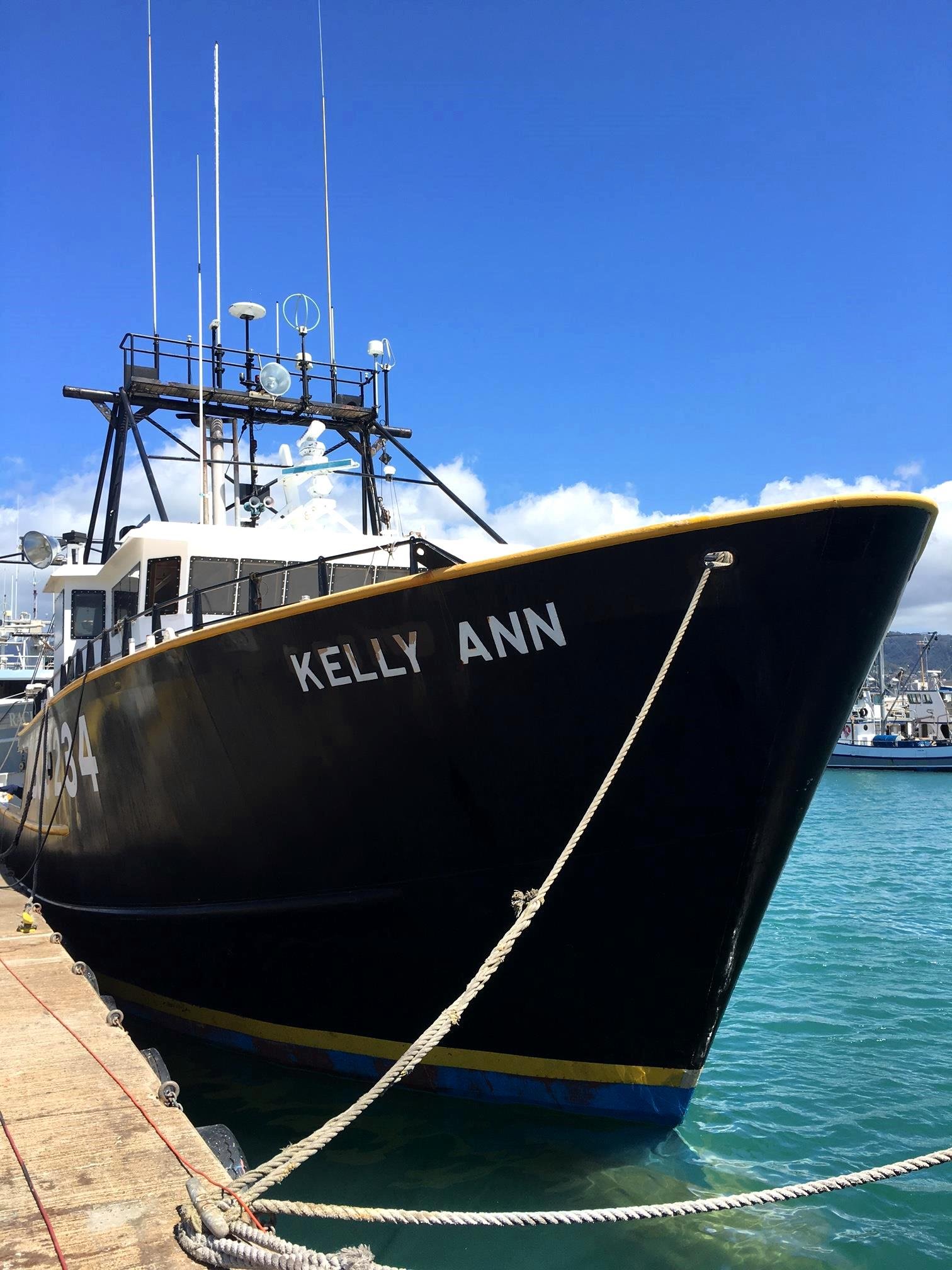Striped Marlin Tagging Project
The Pacific Islands Fisheries Group (PIFG), with funding from NOAA-NMFS-FHQ-2015 Saltonstall Kennedy Program conducted cooperative tagging of striped marlin, Kajikia audax, in Hawaii and Mariana Islands. Striped marlin have recently been determined to be in overfished condition in the western and central North Pacific (WCNP). Since they’re considered to be a single North Pacific stock, this finding has management implications for pelagic fisheries operating across the WCNP. In this new collaborative tagging program, PIFG conducted electronic tagging (30 popup archival satellite, or PSAT tags) and conventional tagging (hundreds of tags) in order to identify movements, behavior, seasonality, and oceanographic associations of juvenile and adult striped marlin in Hawaii and Mariana Islands. Fin clips of striped marlin will be sampled when possible and archived for future genetic analysis to determine natal origin.
In the novel research study on the Striped marlin (Kajikia audax), PIFG and contributors Dr. Chi Hin Lam and Dr. Molly Lurcavage, made significant strides in understanding the species' movements and behaviors in the Central North Pacific (CNP). The study, which utilized popup satellite archival tags (PSAT) on marlin intercepted by the Hawaii-based longline fishery, has shed light on the extent of the marlins' movements in relation to local fisheries and their potential connectivity to other parts of the Pacific. This research is particularly crucial given the overfishing of the species since the mid-1990s, and the need for effective management measures to ensure the sustainability of the species.
This video shows the track of Striped Marlin tagged off of the coast of Hawaii and their distance traveled across the Pacific. Striped marlin tracks revealed extensive spatial use of the Central Pacific, spanning 15°S to 43°N and 122 to 170°W, showing diverse seasonal dispersal patterns and individual movements, and some coincided in time and space with known spawning grounds
The findings reveal fascinating insights into the horizontal movements, seasonal distribution, and sea surface temperature (SST) associations of the tagged marlin. The marlins were found to traverse multiple fisheries management boundaries within a year, indicating a broad range of movement. The study also highlighted the importance of understanding the spatial aspects of stock structure for optimal management. The research is a significant step forward in the conservation efforts for the Striped marlin, providing valuable data that can inform future management strategies. The researchers recommend further studies to continue monitoring the movements and behaviors of the marlin, particularly in areas north of 22°N and south of 15°N around Hawaii, where tagging efforts are currently minimal. This compelling study underscores the importance of scientific research in safeguarding our marine ecosystems and ensuring the sustainability of crucial species like the Striped marlin. Link to report.
Stock assessment approaches by The Inter-American Tropical Tuna Commission (IATTC), the Western and Central Pacific Fisheries Commission and Secretariat of the Pacific Community have supported comprehensive tagging programs for better monitoring and determinations of natural and fishing mortality, movement rates and growth determination The IATTC is moving toward direct use of spatial information collected from electronic tags within assessments using methods such as Multifan-CL and stock synthesis. PSAT (and conventional) tagging of NP striped marlin in the WCPO is the type of fisheries independent information that will be useful to determine the relationship and natal areas (source) of striped marlin of all size classes intercepted by Hawaii and territorial fisheries. Fisheries independent information that identifies the extent of habitat utilization by NP striped marlin, especially as the fishing areas contract, has been called for by IAATC, supported by WCPFC and ISO, and is consistent with priorities in the Kobe process.





